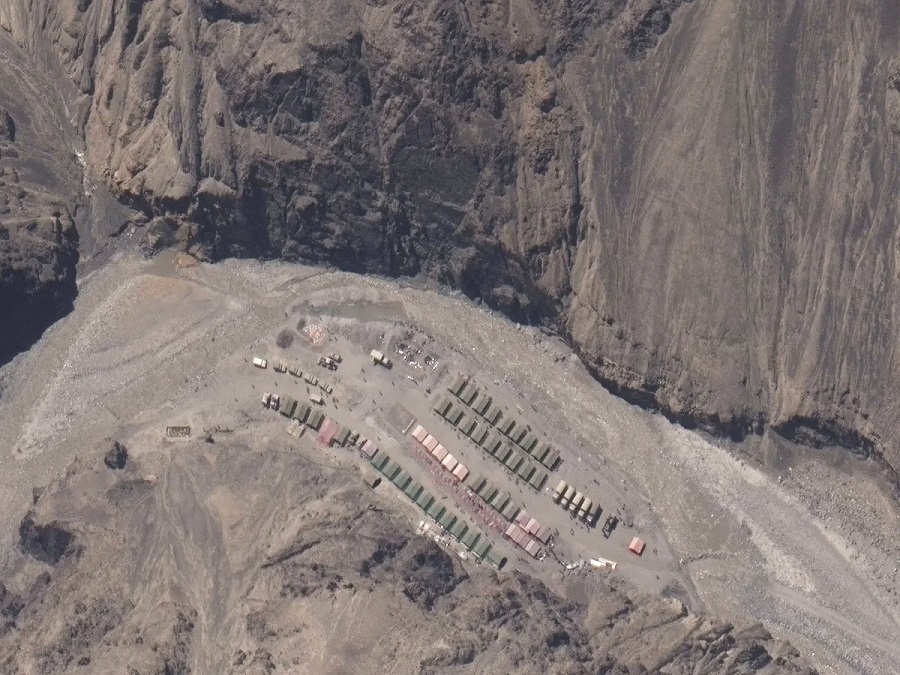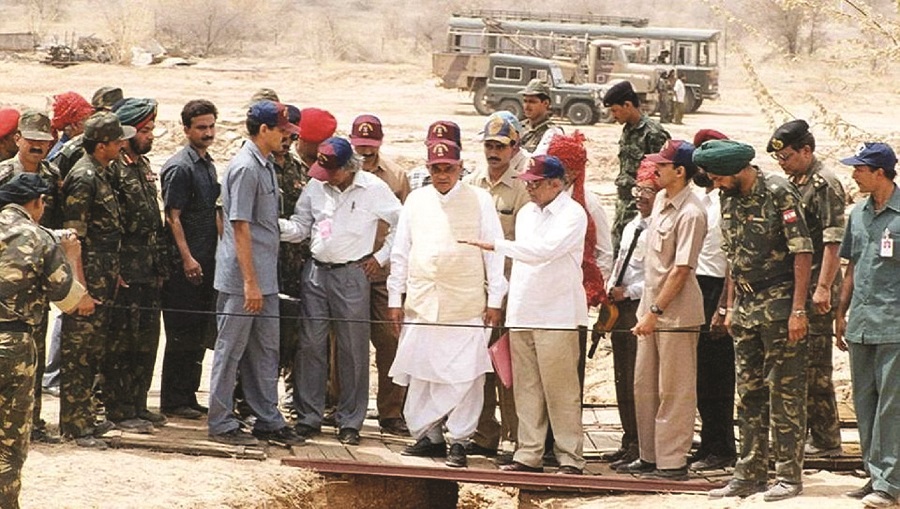The recent surprise attack by Hamas on Israel exposes the vulnerabilities of the CIA and Mossad in dealing with cyber threats and covert operations. How could this happen to a country that has long been regarded as a model of intelligence and security excellence?
By Ranjit Bhushan
- The world has migrated online, with hackers and rogue terrorist cells, leaving intelligence operatives scrambling to keep up
- The recent large-scale attack by Hamas has raised questions about Israel’s intelligence and security services
- The Mossad, for long the favourite of Western fiction writers weaving an aura of invincibility around its operations
- China’s MSS presents a sophisticated, persistent cyber-enabled espionage and attack threat to military and critical infrastructure systems
AN illusion of peace is the classic recipe for intelligence disaster. Indians have long suffered deceptions of peace created by their twin rivals, China and Pakistan, leading to complacency within the system. That, in turn, has led to costly surprises such as Kargil, Mumbai (26/11), and May 2020 (Eastern Ladakh), the scene of Chinese transgressions.
For India, therefore, the 7 October 2023 attack on Israel by the Palestinian group, Hamas, offers intrinsic lessons in statecraft. It is not possible to precisely predict the type, timing, and scale of threats from adversaries. These threats could span various domains, including non-attributable cognitive warfare, disinformation, economic and military coercion, information warfare, or conventional warfare.
“Therefore,’’ notes Lt Gen (Retd) Rakesh Sharma, “it becomes necessary to develop a new paradigm of civil-military fusion for policymaking and strategy formation. India also needs to enhance its capabilities in establishing a low-threshold detection system, providing the political leadership with a wide range of response options.’’
THE CURIOUS CASE OF ISRAEL
It is precisely this, which makes the case of Israel not just curious but alarming as well. Israel has long been regarded as a country that has thrived in the desert surrounded by enemies. They have built a country through grit, determination and ingenuity. They have created breakthroughs in many industries, such as technology, farming, health, and engineering, to name just a few. But above all, they have created a state-of-the-art defense system that includes the all-encompassing intelligence agency Mossad and its local eavesdropper Shin Bet (Shabak).
That such a foolproof system, honed out after years of meticulous work, could be blindsided on one single morning, within a few hours, comes as an eye opener. According to reports, about 1,000 militants gunned down civilians and military targets inside Israel in an attack unprecedented in scale. Israeli media said that at least 700 Israelis were killed and more than 2,100 were wounded. Israel responded by launching airstrikes on targets in the Gaza Strip. Thousands of Palestinians have been killed and more than 2,300 injured. Tragically, the death toll continues to mount as fighting intensifies.
Israel’s intelligence and security services have been called into question for failing to anticipate the large-scale attack launched by Hamas. Yet, there is a tacit admission that no intelligence agency, whatever its reputation, is sacrosanct against a clever adversary. “No national intelligence agency is omniscient or flawless, but this is just a colossal failure,” said Bruce Hoffman, a senior fellow for counter-terrorism and homeland security at the US Council on Foreign Relations, adding that “it’s just astonishing that this could occur.”
Indeed, that is the subject uppermost on everyone’s mind.
The Mossad, for long the favourite of Western fiction writers weaving an aura of invincibility around its operations, coupled with real-life true-blue operations like the raid at the Entebbe airport to rescue hostages in 1976, was taken by surprise.
Israel had long prided itself on its advanced border fence and underground wall near Gaza. It has arguably the most extensive and well-funded intelligence services in the Middle East. It has informants and agents inside Palestinian militant groups, as well as in Lebanon, Syria and elsewhere.
Israel has, in the past, carried out precisely timed assassinations of militant leaders, knowing all their movements intimately. Sometimes these have been done with drone strikes after agents have placed a GPS tracker on an individual’s car; sometimes in the past, it has even used exploding mobile phones.
But on D-day, Hamas fighters were able to breach the border fence in at least one location with explosives and with heavy equipment, videos from the scene revealed. Militants also conducted an amphibious operation on the Mediterranean Sea and used paragliders to reach two dozen locations in Israel.
The militants of Hamas simply bulldozed their way through, cut holes in the wire or entered Israel from the sea and by paraglider.

Israel had long prided itself on its advanced border fence and underground wall near Gaza. It has arguably the most extensive and well-funded intelligence services in the Middle East. It has informants and agents inside Palestinian militant groups, as well as in Lebanon, Syria and elsewhere
To prepare for and carry out such a coordinated, complex attack involving the stockpiling and firing of thousands of rockets, right under the noses of the Israelis, must have taken extraordinary levels of operational security by Hamas.
“We were surprised this morning. About failures, I prefer not to talk at this point right now.
We’re at war. We’re fighting,” Lt Col Richard Hecht, a spokesperson for the Israel Defense Forces, told the media, hours after the shock raids, which some have called Israel’s 9/11 comparable to the spectre of the falling Twin Towers.
INTELLIGENCE AND SECURITY FAILURES
The issue at stake here is why are much-vaunted intelligence security organizations like the CIA and Mossad floundering.
The CIA, if anything a bigger behemoth than Mossad and its close ally, too missed the bus and not for the first time. (See Box Intelligence Failures).
America’s vast spying apparatus was built around a Cold War world of dead drops and double agents. Today, that world has fractured and migrated online, with hackers and rogue terrorist cells, leaving intelligence operatives scrambling to keep up.
US media reports say their spook network is getting increasingly outsmarted because of bureaucratic changes that slow response time or hamper intelligence collection capabilities.

In July this year, the New York Times, quoting military, intelligence and national security officials, reported that the Biden administration is hunting for malicious computer code it believes China has hidden deep inside the networks controlling power grids, communication systems and water supplies that feed military bases in the United States and around the world
One of them told the media, that as a result, they are being frustrated in their attempts to battle swift and complex threats — Russia is launching disinformation campaigns that reach thousands of people in seconds on social media, Iran is hammering oil and gas companies in cyberspace, Chinese hackers are pilfering government records, terrorist networks have fractured and retreated to encrypted networks, and North Korea is furtively building up its nuclear programme.
In July this year, the New York Times, quoting military, intelligence and national security officials, reported that the Biden administration is hunting for malicious computer code it believes China has hidden deep inside the networks controlling power grids, communication systems and water supplies that feed military bases in the United States and around the world.
The discovery of the malware has raised fears that Chinese hackers, probably working for the People’s Liberation Army (PLA), have inserted a code designed to disrupt US military operations in the event of a conflict, including if Beijing moves against Taiwan in the coming years.
INTELLIGENCE FAILURES : DANGEROUS DECADES

CHINESE INCURSION, EASTERN LADAKH, 2020
After a period of bilateral bonhomie, China struck across the Line of Actual Control (LAC). Satellite imagery had revealed a massive PLA exercise on the Tibetan plateau close to the LAC January 2020 onwards. The Chinese exercise included howitzers, Type-15 light tanks and assorted multiple rocket launchers, all of which failed to return to base once the manoeuvres had been completed. Instead, they moved ominously close to the LAC, eventually forcing the Indian Army into a ‘mirror deployment’ in Ladakh by mobilising at least three reserve divisions from the plains and airlifting T90S main battle tanks, M777 lightweight howitzers, missile batteries and flying in Apache attack helicopters, all at great cost. The damage has, however, been done.

THE KARGIL WAR, 1999
For the country’s intelligence and military establishment, lulled into complacency by the cross-border warmth generated by Prime Minister Atal Bihari Vajpayee’s Lahore bus journey in February 1999, the nasty surprise sprang up three months later from the heights of Kargil and lasted for six weeks, claiming hundreds of lives of valiant young officers and jawans before the peaks were recaptured by the Indian Army.

MUMBAI ATTACKED, 2008
Multi-pronged security forces, including those at sea, failed to intercept a group of 10 heavily-armed terrorists who literally strolled into Mumbai by the sea. They held several people as hostages at the famed Taj Hotel in Mumbai. The 59-hour-long televised tableau of terror that unfolded in Mumbai on November 26 and numbed the nation, was the new benchmark for terror as well as for the in-built sloth in India’s intelligence and security setups. The audacious attack, simultaneously carried out at 11 places in India’s financial capital, came via the Arabian Sea.

THE 9/11 ATTACKS
A complacent US was rocked on September 11, 2001, when 19 terrorists of the Islamic extremist group, al-Qaeda, launched a series of series of airline hijackings and suicide attacks. It was the deadliest terrorist attack on US soil; nearly 3,000 people were killed in the surprise attacks, which changed the course of how the West saw extremism. What happened? The 9/11 Commission noted that the intelligence community, assailed by “an overwhelming number of priorities, flat budgets, an outmoded structure, and bureaucratic rivalries,” had failed to pin down the big-picture threat posed by “transnational terrorism” throughout the 1990s and up to 9/11. In response to its recommendations, Congress created a National Intelligence Director and National Counterterrorism Center to pool intelligence.

THE INDIAN NUCLEAR TEST, 1998
In May 1998, the CIA didn’t get wind of India’s intention to set off several underground nuclear blasts, in what Richard Shelby, then Chairman of the Senate Intelligence Committee, called a “colossal failure of our nation’s intelligence gathering.” The intelligence agency saved some face a couple weeks later when it warned that Pakistan was preparing to conduct its own nuclear tests, which it did on May 28, 1998.

PARLIAMENT ATTACK, 2001
The attack on Parliament was reality television at its horrific best. December 13, 2001, saw an audacious terror attack on Parliament which the intelligence agencies had no clue about. The elaborate terror plot was hatched for eight months by the terror organisation in Pakistan and their local modules in Delhi and Kashmir.

PEARL HARBOR ATTACK, 1941
As dawn broke on December 7, 1941, the Japanese struck the US Pacific Fleet at Pearl Harbor, Hawaii, pushing a once-reluctant America headlong into World War II. The naval base was utterly unprepared for battle, even though the US had managed to break the Japanese diplomatic code in the lead-up to the assault and a military attaché in Java had warned Washington of a planned Japanese attack on Hawaii, the Philippines, and Thailand a week earlier.

THE BAY OF PIGS INVASION, 1961
In April 1961, a CIA-planned effort by Cuban exiles to overthrow Fidel Castro’s regime and replace it with a non-communist, US-friendly government went horribly wrong when an aerial attack on Cuba’s air force flopped and the 1,400-strong “Assault Brigade 2506” came under heavy fire from the Cuban military after landing off the country’s southern coast. The botched invasion poisoned US-Cuban relations for all times to come.

THE YOM KIPPUR WAR, 1973
Like October 2023, the CIA was caught flat-footed in 1973 when Egyptian and Syrian forces launched coordinated attacks on Israeli forces in the Sinai Desert and the Golan Heights during the Jewish holiday of Yom Kippur. The conflict, which ended with a ceasefire in October 1973, tested US-Soviet relations and pushed the Arab-Israeli conflict to the top of Washington’s foreign-policy agenda.

THE IRANIAN REVOLUTION, 1978
In August 1978, six months before the US-backed Shah Mohammed Reza Pahlavi fled Iran, the CIA incorrectly concluded that “Iran is not in a revolutionary or even a pre-revolutionary situation.” As the subsequent months were to reveal, Ayatollah Ruhollah Khomeini rose to power in the Islamic Revolution of 1979, opening up a rift between Iran and the United States that persists to this day.

THE SOVIET INVASION OF AFGHANISTAN, 1979
The Soviet Union’s military incursion into Afghanistan, which began in December 1979 and devolved into a bloody, nine-year occupation, took the Carter administration by surprise. The US intelligence community had assumed that the spectre of a costly quagmire would deter the Soviets from invading Afghanistan. Sadly, for Washington, it turned out to be the other way round.
RISE OF LESSER-KNOWN AGENCIES
In fact, there are other spy agencies, whose activities are not under the scanner, as they are in the case of the CIA or the British M16; not being democracies, little or next to nothing is known about them. They now threaten to move ahead of their much better-known and celebrated spy agencies. China’s Ministry of State Security (MSS), which functions as China’s intelligence, security and secret police agency, is one such organization.
A document from the US Department of Justice described the agency as being like a combination of the CIA and FBI. Author Clive Hamilton believes it as being similar to an amalgamation of the Australian Security Intelligence Organization and the Australian Secret Intelligence Service “with a lot more power and less subject to the constraints of the rule of law.”
The MSS presents a sophisticated, persistent cyber-enabled espionage and attack threat to military and critical infrastructure systems through its efforts to develop, acquire, or gain access to information and advanced technologies.
For instance, there have also been multiple US criminal indictments since 2015 involving espionage by Chinese nationals, naturalized US citizens or permanent resident aliens, for their efforts to illegally acquire information and technology to advance PLA modernization.
Under the circumstances, the Indian response cannot be less than inspired.
The country’s National Security Advisor and top spook Ajit Doval – a legend in the intelligence community – has handled complex issues like the Mizo insurgency and the release of IC 814 hostages from Kandahar. In many ways, he is the quintessential out-of-the-box thinker and under him, intelligence gathering and security enforcement has acquired a life and logic of its own.
While India has consistently denied it, India’s RAW has certainly played a more than active part in espionage and counter-espionage activities in the last few years, with Doval as the boss of the security establishment.
WORLD’S MOST DREADED SPOOKS
NATIONAL SECURITY AGENCY (NSA) – UNITED STATES

The US National Security Agency (NSA) is one of the world’s most powerful intelligence organizations. The NSA uses machine learning and artificial intelligence to find actionable information in massive data sets. These skills help the
agency detect trends, relationships, and possible dangers that may be ignored, supporting national security decision-making.
SECRET INTELLIGENCE SERVICE (MI6) – UNITED KINGDOM

The Secret Intelligence Service, also known as MI6, is the foreign intelligence agency of the United Kingdom. It is responsible for gathering intelligence overseas to support British national security objectives. MI6 is known for its work during World War II and the Cold War, and is often featured in popular culture.
DIRECTORATE-GENERAL FOR EXTERNAL SECURITY (DGSE) – FRANCE

The Directorate-General for External Security is the primary foreign intelligence agency of France. It is responsible for gathering intelligence and conducting operations overseas to support French national security objectives. The DGSE is known for its expertise in signals intelligence and its involvement in numerous international conflicts.
FEDERAL SECURITY SERVICE (FSB) – RUSSIA

The Federal Security Service (FSB) is the main intelligence agency of the Russian Federation. It is responsible for domestic security, counter-intelligence, and border control, among other things. The FSB was formed in 1995 from the remnants of the Soviet Union’s KGB.
INTELLIGENCE BUREAU (IB) – INDIA

The Intelligence Bureau is the domestic intelligence agency of India. It is responsible for counterintelligence, counterterrorism, and internal security, among other things. The IB is one of the oldest intelligence agencies in the world, dating back to 1887.
BUNDESNACHRICHTENDIENST (BND) – GERMANY

The Bundesnachrichtendienst is Germany’s primary foreign intelligence agency. It is responsible for collecting and analyzing intelligence to support German national security objectives. The BND is known for its involvement in Cold War espionage and its cooperation with other Western intelligence agencies.
CONSIDER THE FOLLOWING:
- During the 2016 Line of Control (LoC) strike, RAW played an important role by providing real-time and accurate intelligence to operational advisors and planners. It had deployed its human assets closest to the eight demarcated launch pads in Pakistan-occupied Kashmir (PoK). It also started physical surveillance of the Chief of the Pakistan Army, 10 Corps commander and force commander of Northern Areas.
- During the 2019 Balakot airstrike, RAW played an important role by identifying and providing intelligence on the Markaz Syed Ahmad Shaheed training camp, to operational planners. It had human intelligence that a large number of terrorists had congregated in the camp.
- On 1 March 2022, one of the hijackers of Flight IC 814 in the Kandahar hijacking case, Zahoor Mistry, was killed by two bike-borne assailants in Karachi. Mistry reportedly killed 25-year-old Rupin Katyal, on the flight. It is widely believed he was assassinated by RAW.
- On 20 February 2023, Hizbul Commander Bashir Ahmad Peer alias Imtiyaz Alam who was India’s most wanted designated terrorist under the Unlawful Activities (Prevention) Act was shot dead outside a store by unknown assailants in Rawalpindi. This, too, has been credited to RAW.
- On May 6, 2023, Paramjit Singh Panjwar, Chief of the Khalistan Commando Force was gunned down by two unidentified bike-borne gunmen in Johar Town of Lahore while he was out for a morning walk. Allegedly killed by the RAW.
- Canada has accused India of being linked to the murder of a Sikh leader, Hardeep Singh Nijjar, on Canadian soil, fuelling a significant diplomatic spat between the two countries. The killing took place in June this year.

National Security Advisor and top spook Ajit Doval – a legend in the intelligence community – has handled complex issues like the Mizo insurgency and the release of IC 814 hostages from Kandahar. In many ways, he is the quintessential out-of-the-box thinker and under him, intelligence gathering and security enforcement has acquired a life and logic of its own
CHALLENGES IN ESPIONAGE
However, gaps in intelligence gathering are a big challenge. “The biggest failure is at the national level. Our citizens and political parties of all stripes have failed to have a consensus on dealing with the terror threat. This is in direct contrast to the American response to 9/11, where both the Democrats and Republicans buried their differences,” notes Col Anil Athale, a former infantry veteran.
Some other experts believe that even now, the military leadership is consciously kept out of all decision-making apparatus. Even issues that affect the security of the nation are decided by civilian bureaucrats who do not possess even elementary knowledge of military matters. It is only in India that well-connected retired bureaucrats are offered membership of the National Security Council (NSC) as a rehabilitation measure. Merit and expertise are of little consequence.
If that is true, India better watch out for Pakistan’s ISI, which has instigated terror attacks in India for close to a couple of decades. Some of the most notable ones include militancy in Kashmir, the July 2006 Mumbai train bombings, the 2001 Indian Parliament attacks, the 2006 Varanasi bombings, the August 2007 Hyderabad bombings and the November 2008 Mumbai attacks.
The spy agency – with a more than disproportionate influence in Pakistan – has been accused of supporting Taliban forces and recruiting and training Mujahideen to fight in Afghanistan and Kashmir.
Based on communication interceptions, US intelligence agencies concluded that the ISI was behind the attack on the Indian embassy in Kabul on 7 July 2008, a charge that the governments of India and Afghanistan had laid previously.
Now, with the Pakistani ISI – aided no doubt by the Chinese MSS – close on its heels, Indian spy and security agencies need to keep up with the Joneses.

One thought on “Middle East War: Changing Paradigm in The World of Intelligence”